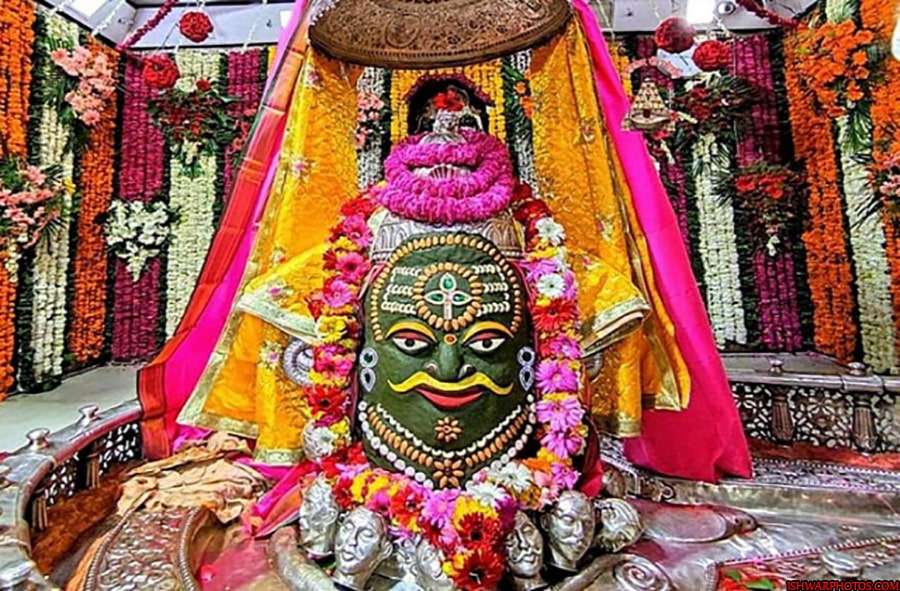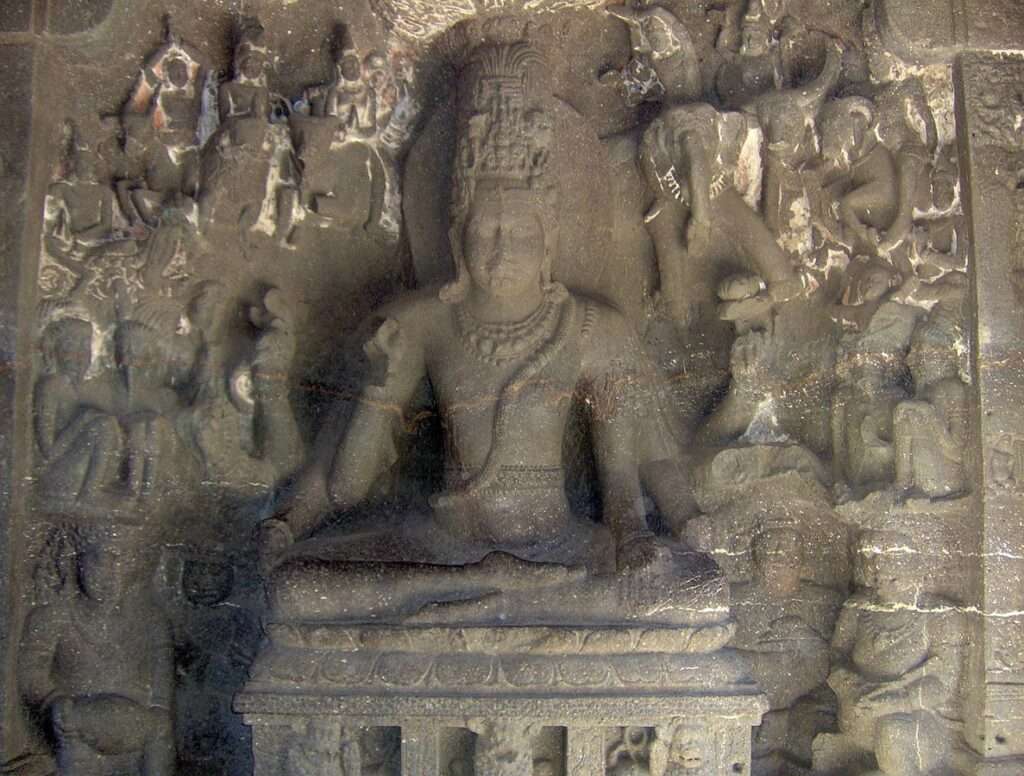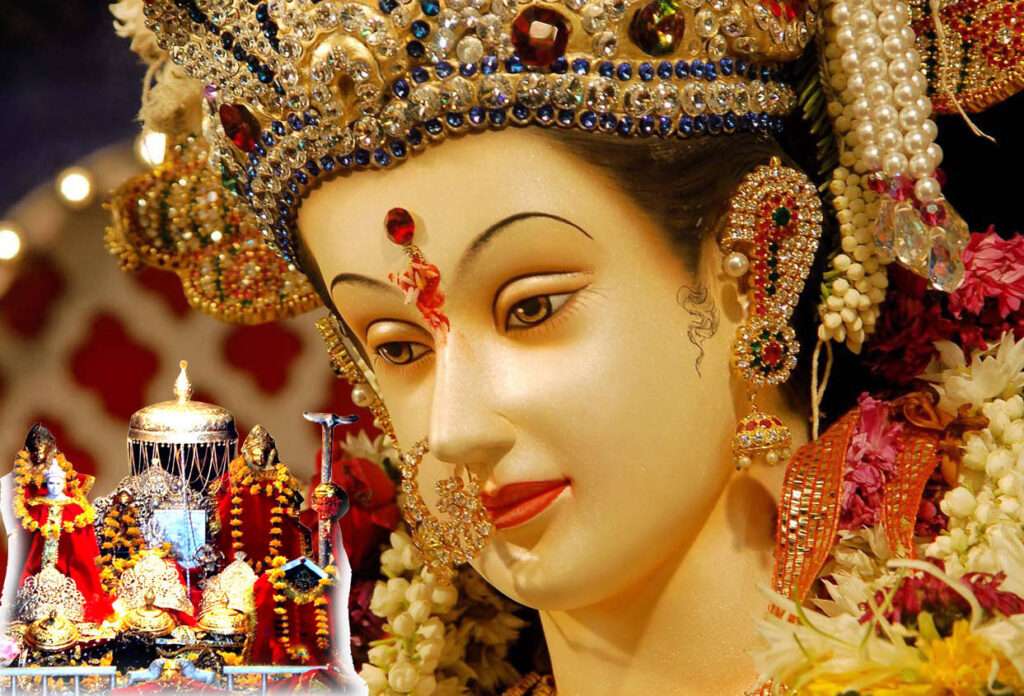Introduction
Mahakaleshwar Jyotirlinga is one of the most revered Hindu temples in India, dedicated to Lord Shiva, the destroyer of evil. It is located in the ancient city of Ujjain, on the banks of the holy river Shipra, in the state of Madhya Pradesh. It is one of the twelve Jyotirlingas, which are said to be the most sacred abodes of Lord Shiva, where he manifested himself as a pillar of light.
In this blog post, we will explore the history, significance, architecture, rituals and festivals of Mahakaleshwar Jyotirlinga, and also provide some useful information for visitors who wish to visit this divine place.
Table of Contents
History of Mahakaleshwar Jyotirlinga
The origin of Mahakaleshwar Jyotirlinga is shrouded in mystery and legend. According to the Shiva Purana, once Brahma and Vishnu had an argument over who was supreme in the creation. To test them, Shiva pierced the three worlds as an endless pillar of light, the jyotirlinga. Vishnu and Brahma decided to travel along the pillar downwards and upwards respectively, to find the end of the light. Brahma lied that he had found the end, while Vishnu conceded his defeat. Shiva appeared as a second pillar of light and cursed Brahma that he would have no place in ceremonies while Vishnu would be worshipped till the end of eternity.
Another legend says that a five-year-old boy named Shrikar was enthralled by the devotion of King Chandrasena of Ujjain towards Lord Shiva. He took a stone and by considering it a linga started worshipping it regularly. Others thought that his worship as merely a game and tried to dissuade him in all ways. But all the efforts went in vain. On the contrary, devotion of Shrikar increased by every passing day. Pleased by the boy’s devotion Lord Shiva assumed Jyotirlinga form and resided in the Mahakal forest.
According to historical records, Mahakaleshwar Jyotirlinga was first established by Prajapita Brahma, the creator god, in the pre-historic period. The temple was mentioned in several ancient poetic texts, such as Raghuvansam by Kalidasa, who described it as a magnificent and splendid structure with stone foundation and wooden pillars. The temple was also visited by many famous kings and sages, such as Harshavardhana, Vikramaditya, Adi Shankara and Dnyaneshwar.
The temple was destroyed several times by invaders, such as Iltutmish in 1234 CE and Aurangzeb in 1685 CE. It was rebuilt by various rulers and devotees over time, such as Maharaja Jai Singh II of Jaipur in 1736 CE and Ahilyabai Holkar of Indore in 1770 CE. The present structure of the temple is mainly attributed to Ahilyabai Holkar’s renovation.
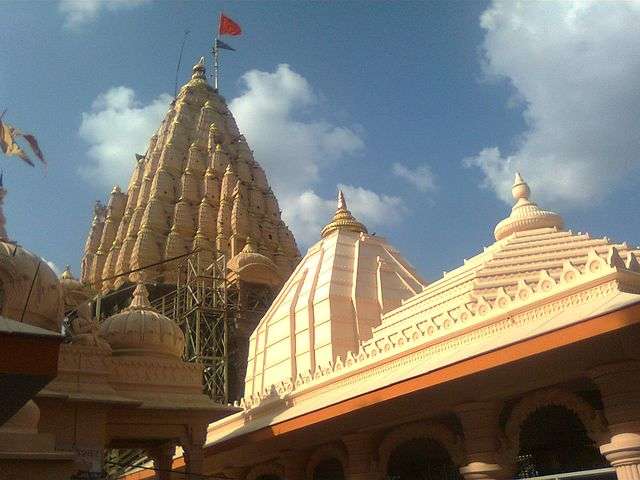
How to Reach
By Train:
- The nearest railway station to Mahakaleshwar Jyotirlinga is Ujjain Junction Railway Station, which is 2 kilometers away. Trains from major cities like Delhi, Mumbai, Ahmedabad, Jaipur, and Bhopal connect to Ujjain Junction Railway Station.
[Image of Ujjain Junction Railway Station in Ujjain]
By Bus:
- There are direct buses from major cities like Delhi, Mumbai, Indore, Jaipur, and Bhopal to Ujjain. You can also take a bus from Ujjain Junction Railway Station to Mahakaleshwar Jyotirlinga.
By Flight:
- The nearest airport to Mahakaleshwar Jyotirlinga is Devi Ahilyabai Holkar Airport, which is 50 kilometers away in Indore. From Indore Airport, you can take a taxi or bus to Ujjain and then a rickshaw or taxi to Mahakaleshwar Jyotirlinga.
[Image of Devi Ahilyabai Holkar Airport in Indore]
By Road:
- Mahakaleshwar Jyotirlinga is well connected by road to major cities in India. You can drive your own car or take a bus or taxi to reach Mahakaleshwar Jyotirlinga.
Here are the distances and travel times from major cities to Mahakaleshwar Jyotirlinga:
| City | Distance (km) | Travel Time (hrs) |
|---|---|---|
| Delhi | 776 | 12 |
| Mumbai | 648 | 10 |
| Indore | 50 | 1 |
| Jaipur | 372 | 6 |
| Bhopal | 188 | 3 |
Significance of Mahakaleshwar Jyotirlinga
Mahakaleshwar Jyotirlinga is considered to be one of the most powerful and sacred shrines of Lord Shiva in India. It is believed that whoever worships Mahakal with devotion and sincerity attains liberation from the cycle of birth and death. Mahakal is also known as the lord of time, who can change the course of destiny and protect his devotees from all evils.
The idol of Mahakaleshwar is known to be dakshinamukhi, which means that it is facing south. This is a unique feature among the 12 Jyotirlingas, which is upheld by the tantric shivnetra tradition. It is said that facing south signifies that Mahakal is watching over and destroying the evil forces that threaten his devotees.
The lingam of Mahakaleshwar is also believed to be swayambhu, which means self-manifested or self-born. It is said that it derives currents of power or shakti from within itself, unlike other lingams that are ritually established and invested with mantra-shakti. The swayambhu lingam represents the supreme partless reality, out of which Shiva partly appears.
Mahakaleshwar Jyotirlinga is also associated with many other deities and legends. For instance, it is said that Lord Krishna and his brother Balarama worshipped Mahakal before the Kurukshetra war for victory. It is also said that Parvati, the consort of Shiva, performed penance at Mahakal to attain half of his body, becoming Ardhanarishvara. Moreover, Mahakal is considered to be the guardian deity of Ujjain, which is one of the seven sacred cities or Sapta Puri in Hinduism.
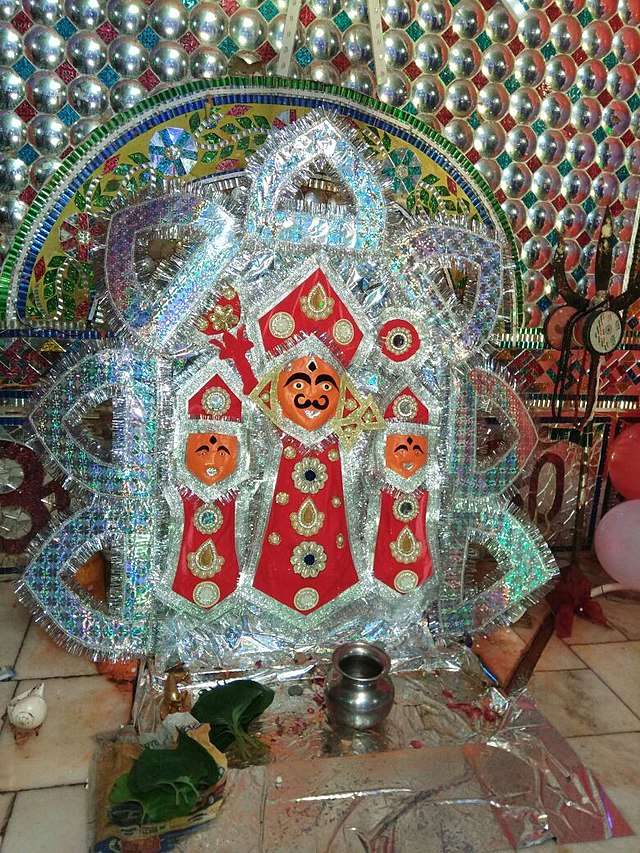
Architecture of Mahakaleshwar Jyotirlinga
Mahakaleshwar Jyotirlinga is a three-storeyed temple, with each storey housing a different form of Shiva. The lowest or the underground storey has the swayambhu lingam of Mahakal, which is silver plated and adorned with a serpent. The middle storey has the lingam of Omkareshwar, another Jyotirlinga in Madhya Pradesh. The uppermost storey has the lingam of Nagachandreshwar, which is open for darshan only on Nag Panchami day.
The temple complex also has several other shrines and images dedicated to various gods and goddesses, such as Ganesh, Kartikeya, Parvati, Nandi, Kal Bhairav, Hanuman and Dattatreya. The temple also has a huge sabha mandap or assembly hall, where cultural and religious events are held. The temple walls are decorated with sculptures and paintings depicting scenes from Hindu mythology and history.
The temple is surrounded by a high wall with four gates facing four directions. The main gate is in the east, which leads to a large courtyard with a sacred pond called Koti Tirtha. The pond is said to have been created by Shiva himself and contains water from all the holy rivers. The pond is also used for ritual bathing and immersion of idols.
The temple also has a tall shikhar or spire, which is about 33 meters high and has five levels. The shikhar is crowned by an amalaka or a ribbed stone disk and a kalash or a pot. The shikhar also has several niches and balconies with statues of Shiva and other deities.
Rituals and Festivals of Mahakaleshwar Jyotirlinga
Mahakaleshwar Jyotirlinga is a hub of religious activities and celebrations throughout the year. The temple follows the tantric mode of worship, which involves elaborate rituals and offerings. The temple opens at 3 am and closes at 11 pm, with six main aartis or worship services performed daily. The most famous and unique among them is the Bhasma Aarti, which is performed at 4 am every morning.
The Bhasma Aarti is a ritual in which the lingam of Mahakal is worshipped with the sacred ash or bhasma made from the funeral pyre. It is said that this ritual symbolizes the destruction of evil and ignorance by the fire of knowledge and devotion. The bhasma used for the aarti is obtained from a special place called Mahakaal Van, where only dead bodies without any relatives are cremated. The bhasma aarti is considered to be very auspicious and powerful, and only those who follow strict rules of purity and discipline are allowed to witness it.
The other aartis performed at the temple are:
- Naivedya Aarti at 7:30 am
- Sandhya Aarti at 6 pm
- Shringar Aarti at 7 pm
- Night Aarti at 10:30 pm
- Jalabhishek at 11 pm
Apart from the daily rituals, the temple also celebrates many festivals and occasions with great fervor and enthusiasm. Some of the major festivals observed at the temple are:
- Mahashivaratri: This is the most important festival dedicated to Lord Shiva, which falls on the 14th day of the dark fortnight of Phalguna month (February-March). On this day, devotees observe fasts, offer prayers, chant mantras, perform abhishekams and join processions carrying the idol of Mahakal around the city.
- Kartik Mela: This is a month-long fair held during the Hindu month of Kartik (October-November), which attracts lakhs of pilgrims from all over India. During this fair, various cultural and religious programs are organized at the temple premises and other places in Ujjain.
- Kumbh Mela: This is one of the largest religious gatherings in the world, which takes place once in 12 years at four places in India – Haridwar, Allahabad, Nashik and Ujjain. Ujjain hosts the Kumbh Mela when the planet Jupiter enters Leo sign and Sun enters Aries sign. During this time, millions of devotees take a holy dip in the river Shipra and visit Mahakaleshwar Jyotirling.

frequently asked questions
- What is Mahakaleshwar Jyotirlinga?
[Image of Mahakaleshwar Jyotirlinga temple in Ujjain]
Mahakaleshwar Jyotirlinga is one of the twelve Jyotirlingas, which are the holiest of all Shiva temples in Hinduism. It is located in the ancient city of Ujjain in the state of Madhya Pradesh, India. The temple is situated on the side of the holy river Shipra.
- Why is Mahakaleshwar Jyotirlinga so special?
Mahakaleshwar Jyotirlinga is special for a number of reasons. First, it is one of the twelve Jyotirlingas, which are considered to be the most sacred abodes of Shiva. Second, the idol of Mahakaleshwar is known to be dakshinamurti, facing the South. This is a unique feature, upheld by tantric tradition to be found only in Mahakaleshwar among the 12 jyotirlingas. Third, the temple is located in Ujjain, which is considered to be one of the seven sacred cities of Hinduism.
[Image of Dakshinamurti form of Shiva]
- What are the dos and don’ts at Mahakaleshwar Jyotirlinga?
Here are some dos and don’ts at Mahakaleshwar Jyotirlinga:
Dos:
- Dress modestly.
- Remove your shoes before entering the temple.
- Offer prayers to Lord Shiva.
- Take a dip in the holy pond.
- Visit the other temples in the area.
Don’ts:
- Eat non-vegetarian food.
- Smoke or drink alcohol.
- Argue or fight with anyone.
- Take pictures or videos inside the temple.
What are the best times to visit Mahakaleshwar Jyotirlinga?
The best time to visit Mahakaleshwar Jyotirlinga is during the months of November to February, when the weather is pleasant. However, the temple is open all year round, and there are always pilgrims visiting.
- What are the facilities available at Mahakaleshwar Jyotirlinga?
There are a number of facilities available at Mahakaleshwar Jyotirlinga, including:
- Accommodation: There are a number of hotels and guesthouses in Ujjain, as well as some ashrams and temples that offer accommodation to pilgrims.
- Food: There are a number of restaurants in Ujjain that serve vegetarian food. There are also a number of stalls in the temple complex that sell food and snacks.
- Transportation: There are a number of buses and trains that connect Ujjain to other major cities in India. There is also an airport in Ujjain, which is served by a number of domestic flights.
